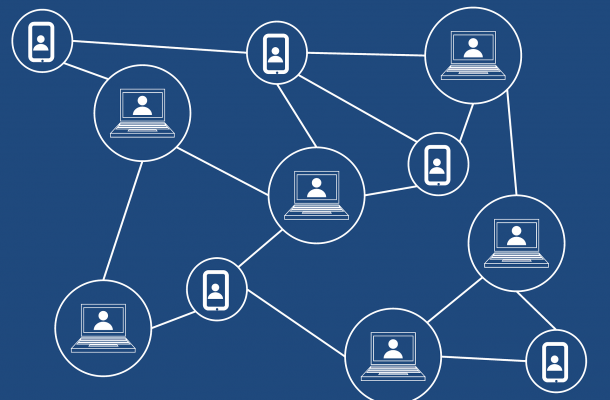Blockchain of things: Could blockchain save IoT?

The internet of things (IoT) was a major buzzword just a few years ago, right before blockchain took over to become the word of every day. But make no mistake; IoT is still a very crucial component to the revolution of the digital world which most businesses depend on today.
In a 2017/2018 survey by Vodafone IoT, in which 1,278 public sector and enterprise executives from 13 countries were involved, 74% of those who had adopted IoT technology expressed the opinion that digital transformation was impossible without it.
Business Insider Intelligence forecasts that about $15 trillion will be invested in IoT by 2025 and that there will be more than 15 billion IoT devices before the same year. The implication is that businesses will have to adopt IoT soon if they want to keep up with the modern world, no matter how difficult it might seem at the moment.
IoT Challenges
With the history of cybercrime, IoT systems are not safe today. Hackers could attack different components – the physical device, the network, the encryption, or the software. It means that the obvious issues of privacy, security, and identity verification must be addressed.
This further implies that a basic IoT system for businesses will have to include plenty of different integral components – a safe platform, edge tiers managing the devices, contextual rules, multiple protocols, various data formats, and storage. Of course, all these elements will have to be interoperable between unique and dynamic networks.
Our current IT systems seem to be simply underqualified for such large tasks. They often fail to provide required security, leading to dangerous situations of exposing users’ data to unauthorized parties.
Blockchain to the Rescue
Blockchain technology might not be a magic bullet with all the solutions to challenges IoT is facing, but it sure can help solve a few of the major problems. As IoT applications are distributed in nature, it is reasonable to apply a distributed ledger technology (DLT) which blockchain provides.
By using DLT, IoT could obtain the following:
- A distributed system for storing records and sharing data on the network of specific stakeholders;
- Cryptographic security with verification of identity and provenance authentication;
- Embedded business terms through smart contracts which execute automatically;
- Agreement and consensus models that can detect malicious activities and mitigate threats.
Blockchain technology answers the issues of trust, privacy, single point of failure, scalability, record keeping, time-stamping, and consistent reliability. Together with IoT, it could build a healthy system which allows devices to register and validate themselves on the network, while business activities could execute automatically through smart contracts.
There would be no worry about attacks like denial of service or identity theft because there will be no single point of failure in such a system.
To illustrate the benefits of a blockchain-based IoT system, imagine a business setting with complex trade routes and logistics such as delivery service, for example. Distributed ledgers would be employed to track and record everything that is happening to each item or package. This will provide transparency of the origin of items and packages, their current delivery status, etc.
The possibilities of applying these two technologies together are limitless. Take another example – insurance. The main use case of blockchain in insurance would be smart contracts and the enhancing of several other elements such as processing claims.
Taking Initiatives
Although IoT is still not fully developed, it is encouraging how both big and small tech companies are invading the space with revolutionary IoT ideas and solutions. Here are some examples.
IBM already facilitates the extension of blockchain into IoT. Company’s experts believe that a combination of AI, IoT, and blockchain is key to opening up numerous possibilities in the application of IoT across industries.
Atonomi is providing a new security protocol and infrastructure that will enable billions of IoT devices to achieve both data and commerce interoperability in a trustworthy fashion.
IOTA is leveraging a different DLT called Tangle to provide a new and revolutionary transactional settlement and data transfer system for IoT solutions.
IoT Chain (ITC) seeks to become a lite operating system employing the concept of blockchain while implementing DAG, CPS, SPV, and PBFT technologies. This will not only allow the decentralized layering and storage of data but will also protect devices and network by leveraging the combined strength of the millions of IoT nodes on the network.
Chain of Things is a consortium exploring the applications of blockchain to provide security that aims to enable the success of IoT on a global scale.
IoTeX is a next-generation decentralized network for IoT that is tackling the issues of scalability, operating cost, and privacy by introducing a token economy into the IoT space.
Watson IoT Platform. This platform features a built-in capability that allows you to add specific IoT data to a private blockchain.
Ambrosus. This blockchain-powered IoT network was specifically built for the food and pharmaceutical enterprises, facilitating secure and frictionless dialogue between databases, distributed ledgers, and sensors. This should streamline supply chain management as well as quality assurance.
Conclusion
Although success may seem miles away, IoT is coming, and distributed ledger technologies such as blockchain are going to be at the center of it. If you own a business, it is time you start exploring ways of benefiting from IoT or you’ll be left behind.
Stefan Ateljevic is the Head of Content and Community Manager at BitFortune. With an extensive background in content creation and love of all things regarding cryptocurrencies, Stefan passionately works to help people understand the benefits and potential of the crypto industry.











